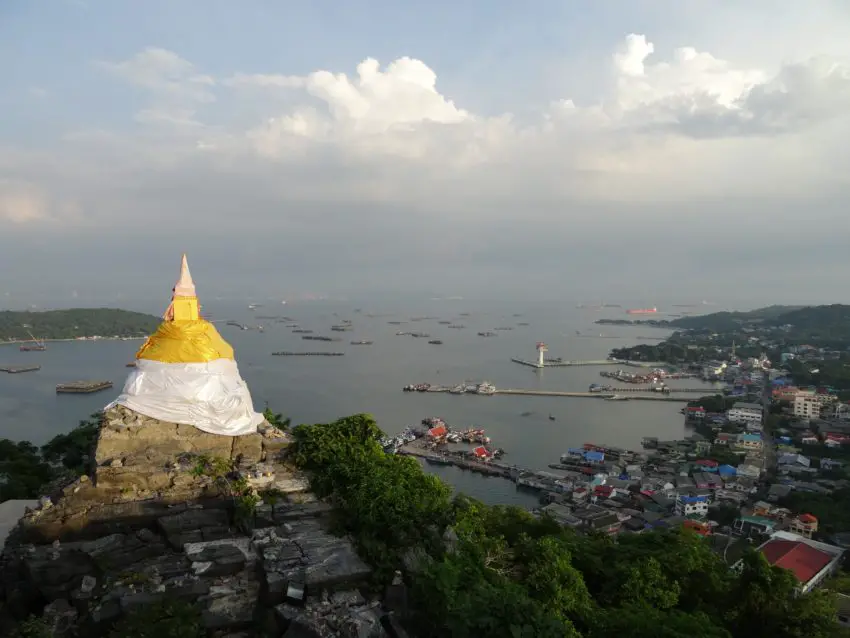Unlike on many of the surrounding islands, I didn’t meet a lot of other foreigners on pretty Ko Sichang. I guess that the main reason for this is the lack of beaches and spots to party compared to many other Thai Islands, like for instance Ko Samet further south-east along the coast.
Ko Sichang more than makes up for that in atmosphere and I, for my part very much enjoyed the low-key and somewhat off-the-beaten-path feeling while I explored the island’s unusual sights.
Cave temples? Check. Golden Ape Statues? Check. Singing Stones? Check. This isn’t your typical Thai island and I love it all the more for it. Read on for everything you need to know about visiting one of my favourite islands in Thailand.
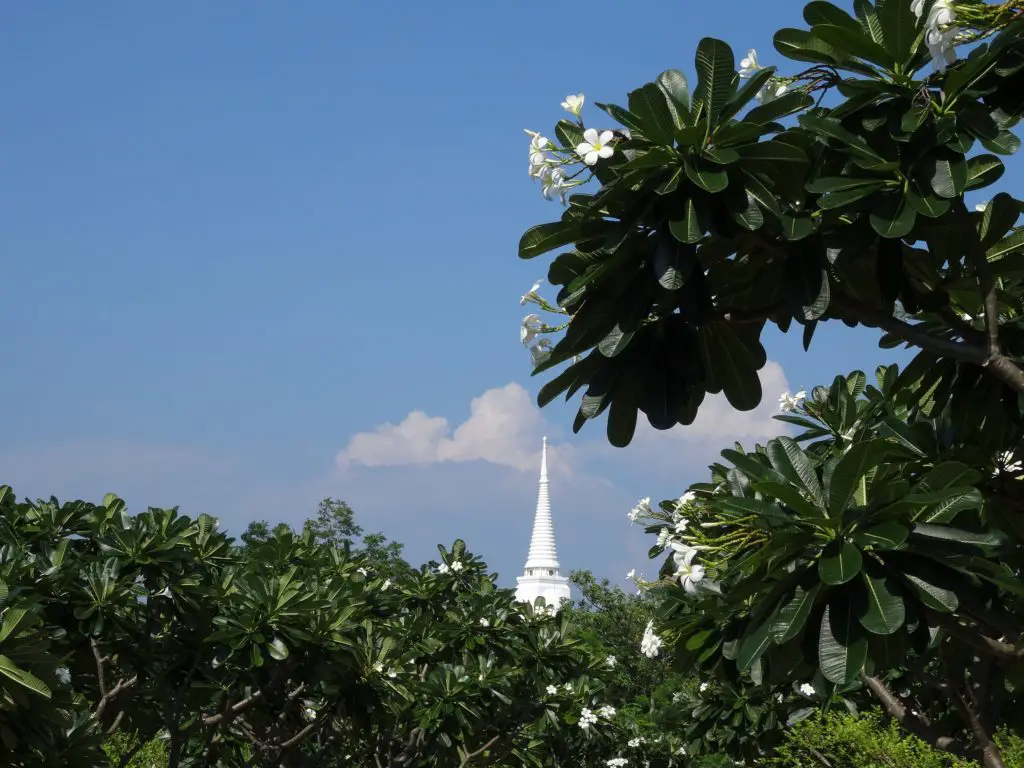
This post may contain affiliate links and I might earn a small commission at no additional cost to you. For more info click here.
What to See and Do on Ko Sichang
One of the nice things about the island is that the sights are super diverse, ranging from the remains of a 19th century royal palace to magnificent viewpoints to impressive limestone caves. Plus, even if you’re templed-out after spending some time in South-East Asia, the Buddhist places of worship on Ko Si Chang are very diverse.
Thus, they all warrant a visit and guarantee some new insights. (even if that insight is just that you really don’t want to step barefoot on a tail-less whip scorpion in a cave-temple. Trust me – these are the creepiest creatures ever to exist on this earth.). Here’s a few of the top sights on Ko Sichang.
Phra Chuthathut Summer Palace
Originally built as a Summer Palace for King Chulalongkorn (Rama V.) in the late 19th century, the impressive main building called Vimanmek Teak Mansion, was eventually transported to Bangkok’s Dusit Palace where it formed the main living quarters of the Royal Family.
The smaller palace buildings remaining on Ko Sichang nowadays constitute an interesting open-air museum giving you an idea of the layout of the former palace garden and informing you of the daily live of Thai Royalty in the 19th century.
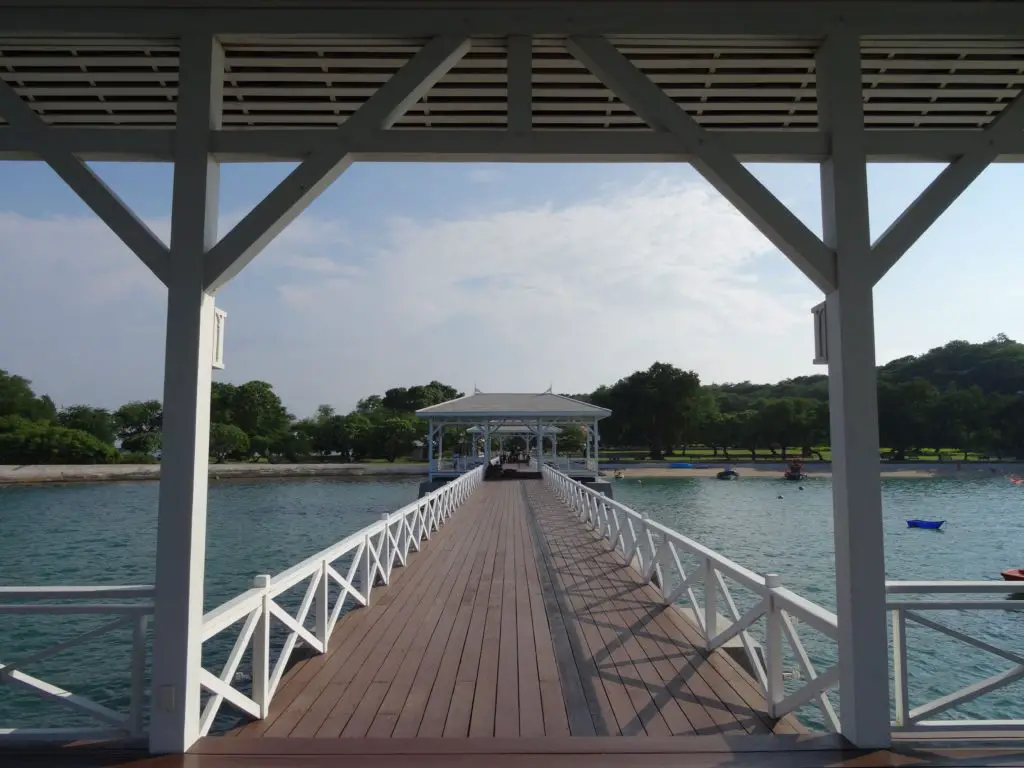
Another good reason to drop by is the beautiful location on the seafront and the pleasant garden surrounding the small wooden pavilions forming the remaining parts of the palace. Especially nice is the Saphan Asadang Balcony leading onto a quaintly painted wooden pier jutting out into the Gulf of Thailand.
Nearby, there’s also a small white-washed lighthouse. Several of the buildings feature small exhibitions on Rama V.’s visits to the island, while Phongsri Building contains a bronze statue of the king and his family.
At the western end of the complex, a small pathway leads up to the blindingly-white Pagoda of the small Wat Atsadang Nimit Temple on the grounds. The latter is picturesquely surrounded by frangipani bushes and especially photogenic at sunset. On the way up you’ll find the so-called singing stone, which supposedly hums when you strike it at the right point (although all I got was a somewhat metallic clank).
The complex can be found along the eastern coast of the island, at the southern edge of the village. There’s no entrance fee.
Research Aquarium
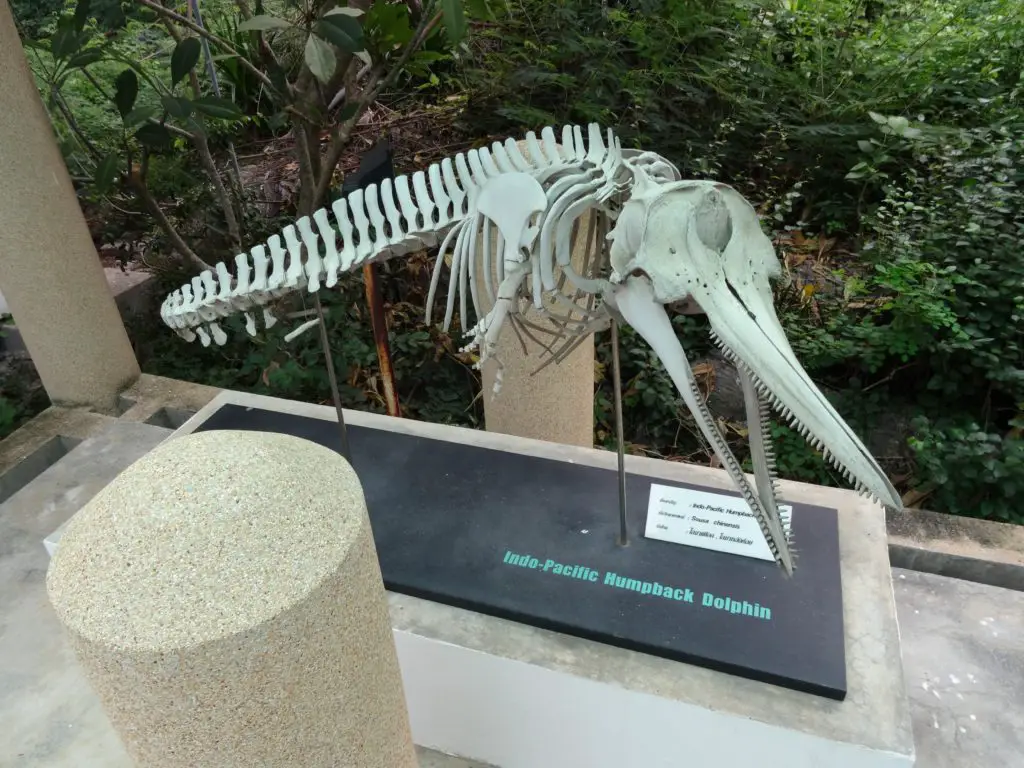
Directly north along the coast from the palace, the “Sichang Marine Science Research and Training Station” of Chulalongkorn University has various tanks and aquariums set up containing local fish and other marine life. Visitors are allowed to take a peek – notice the humongous sea urchins as a cautionary tale not to walk along the seafloor in the waters surrounding the island unless you can see it. The entrance is free.
San Jao Phaw Khao Yai (Chinese Temple)
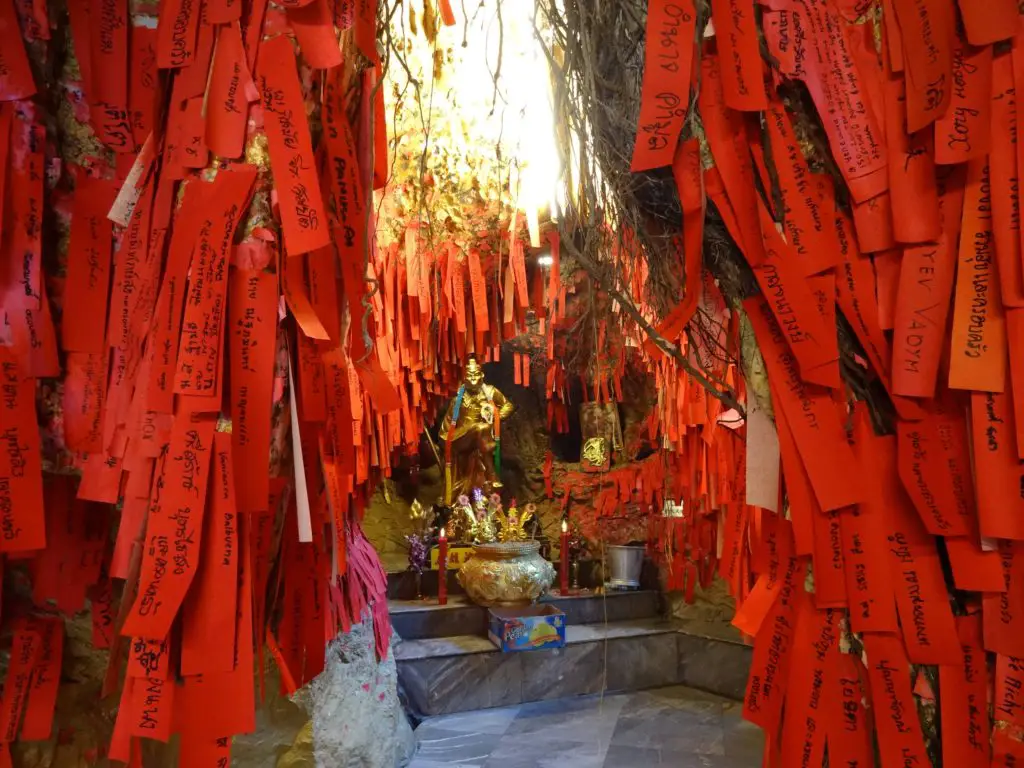
This impressive Chinese Temple’s name translates to “Shrine of the Father Spirit of the Great Hill”. Great Hill sounds about right, as it lords over the small village clinging to the cliff at its northern end.
Apart from the intricate main complex full of detailed dragon sculptures and gaudy statues of various deities, there’s an impressive shrine set in a cave centred on a golden ape statue (A Variation of Hanuman, perhaps?). The interior of the cave has been decorated by countless red paper slips, containing supplicants’ prayers.
You can continue climbing up the mountain from the main cluster of buildings to reach a stone representing Buddha’s Footprint, from where you’ll have a fantastic view of the village, bay and hilly interior of the island.
Wat Tham Yai Prik
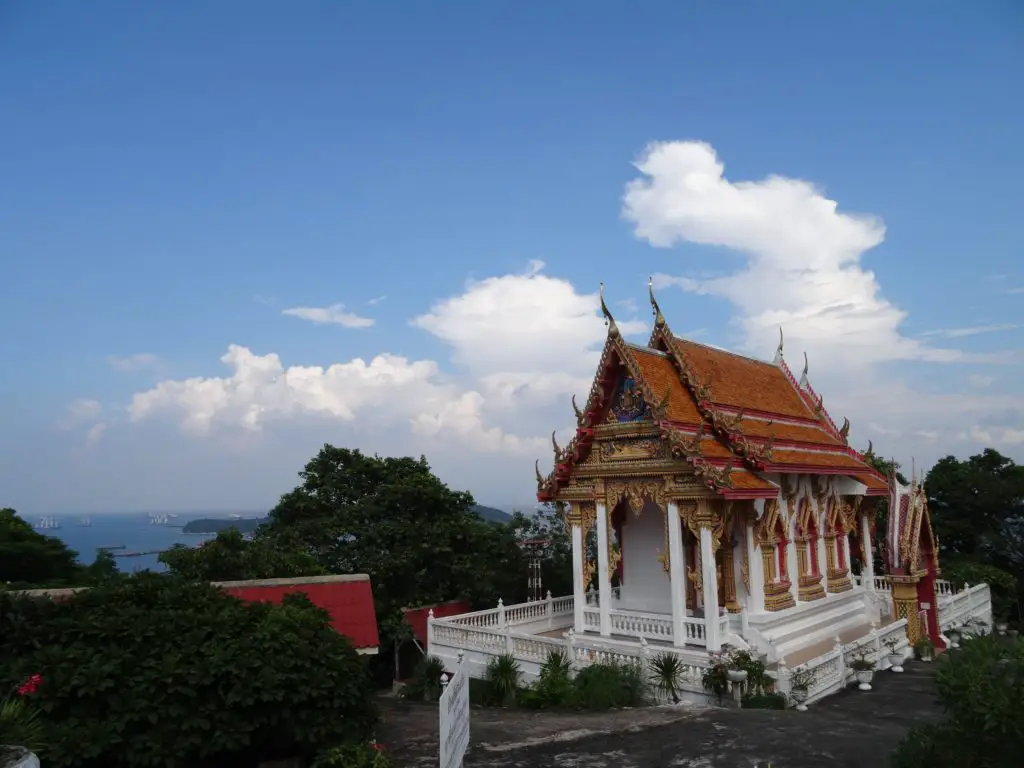
Another fascinating temple, the various shrines of Wat Tham Yai Prik are set in a pleasantly shaded garden. You can explore several Meditation Cells within caves on the compound. One of these is where I almost stepped on a tail-less whip scorpion – a creature straight from David Cronenberg’s nightmares.
They’re not poisonous but I still suggest that you take a flash-light with you, so you can see exactly where to tread. The temple also has a nice view down both sides of the island.
It can be found at the western end of the village. You can find it by following the road south from the main pier and continuing south-west at the intersection with Th. Saowapa (the main road through the village).
Jak Kra Pong Cave Temple
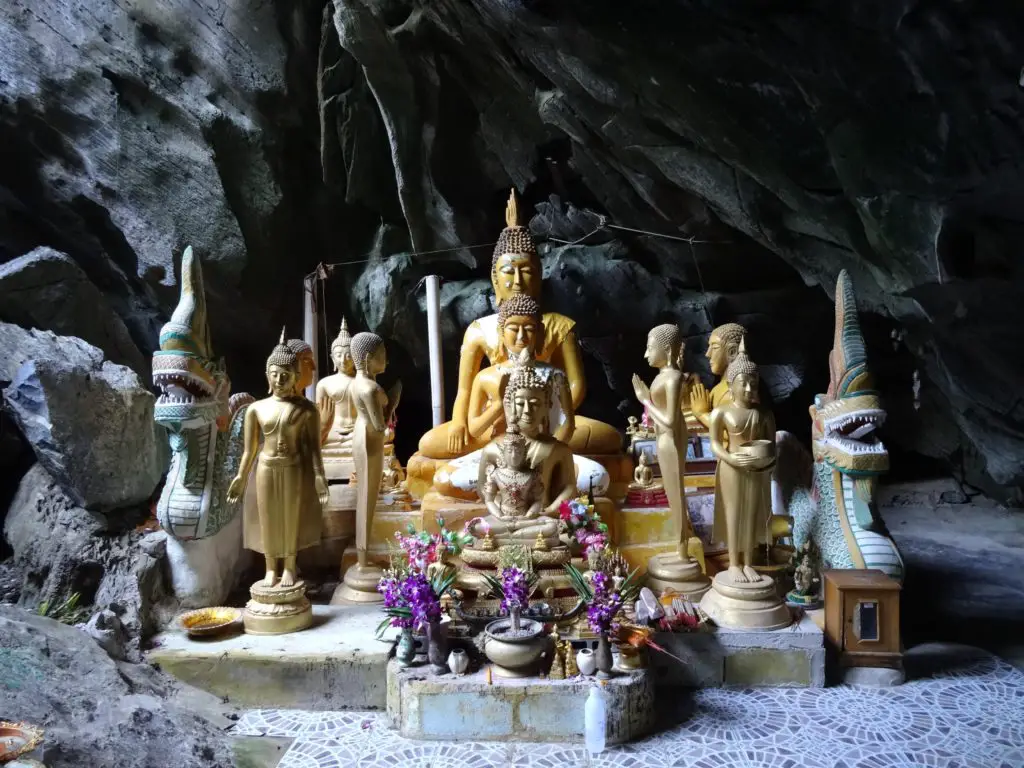
This pretty cave-temple complex is centred on the big golden Buddha statue that you can see from all over the eastern part of the island. From this main area, several pathways branch off leading through tunnels in the rock and to cave shrines containing Statues of the Buddha and various Bodhisattvas (I even spotted a Ganesha).
You are allowed to walk past the monk’s dormitories, where you can climb up to the golden Chedi on top of the mountain for a great view of the village and bay to the east. While you’re there, keep an eye out for the giant millipedes that call the island and its countless caves its home and can get freakishly large. The temple is located directly to the north of Wat Tham Yai Prik.
Taam Pang Beach and Kayaking
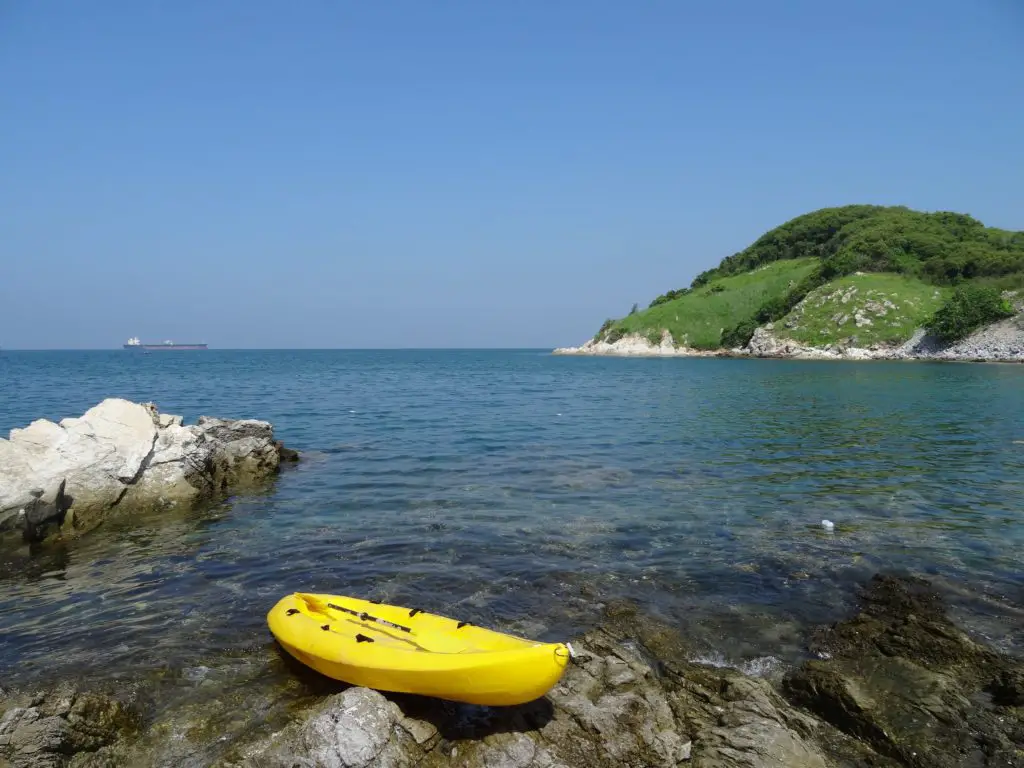
This is the only proper beach on the island and as such it’s rather popular (read: crowded). A cool think to do here is to rent a small kajak and paddle along the coast for a different view of the island. You could even continue south to Ko Yai Thao, a tiny islet off the southern tip of Ko Sichang with not so tiny iguanas. Just make sure to conserve your energy, as the wind turned on my way back and returning to Taam Pang Beach was quite a struggle.
I suggest taking a waterproof bag, to keep your belongings dry and safe while paddling away. Depending on how choppy the waves are, you can get quite wet. The beach is located in a bay along the western coast of the island. Follow the main road south-west out of the village and turn west at the first intersection to get there.
Limestone Cliffs
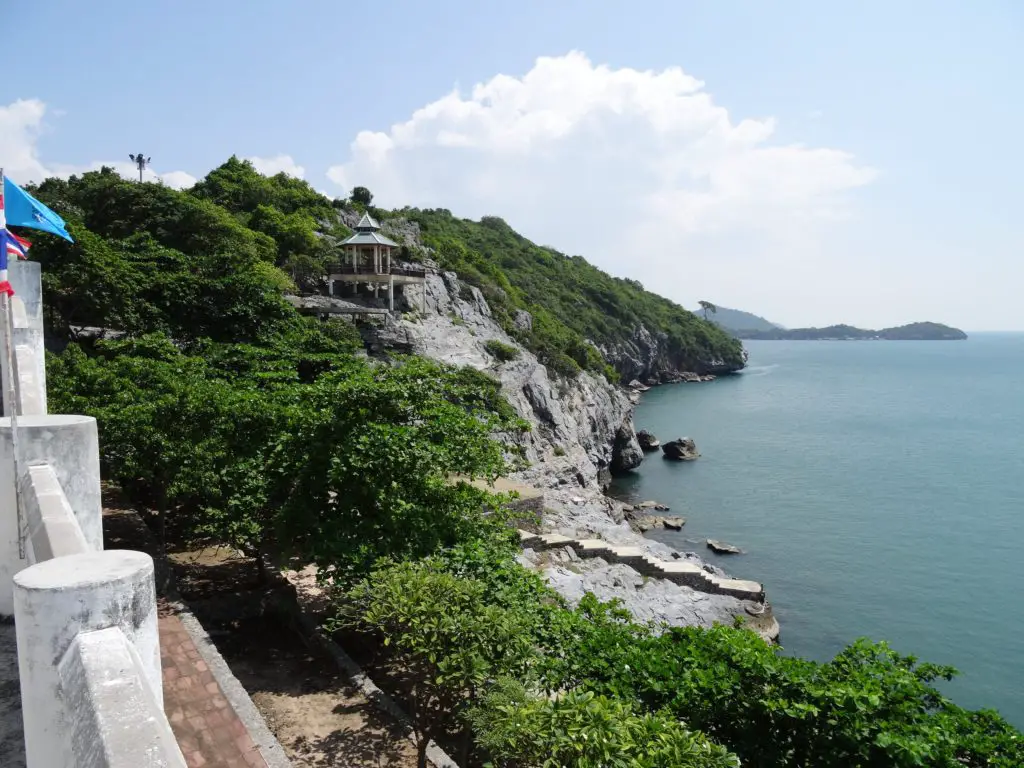
At the north-western coast of the island you’ll find an area of limestone-cliffs dotted with various viewpoints along the coast. This won’t be the most impressive cliff-face you’ve ever seen but it still makes for a worth-wile sight to check out if you have a spare hour or so and it’s a nice place to watch the sunset. Take a close look at the rock to notice its striated structure, testifying to the long process by which it was created while being lifted out from the seabed.
What to see in Sri Racha
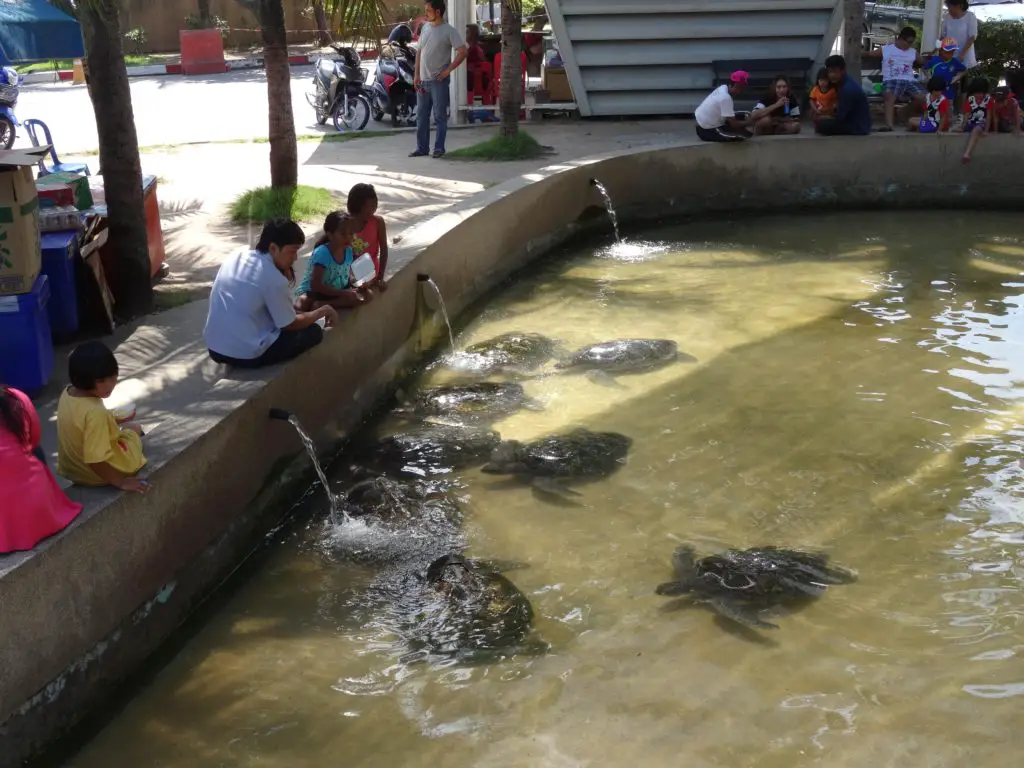
Sri Racha is the jumping-off point for Ki Sichang and while there aren’t a whole lot of sights, the Chinese-Thai Wat Ko Loi on the small islet of Ko Loi by the old Jarin Pier is still worth a peek. It features a pretty Ubosot with gold-plated monk statues as well as some huge sea turtles swimming around several ponds on the grounds. There’s also a colourful Chinese style pavilion nearby.
If you have to wait for your ferry to Ko Si Chang, the palm-dotted Health Park on the mainland would be a nice place to plunk yourself down for a bit in the shade.
Map of Ko Sichang
Here’s a map to give you an idea of the layout of the island. Apart from some of the sights mentioned above, you’ll also find a couple of guest houses and hotels.
Practicalities
How to get to Ko Sichang
Ko Sichang can be reached by ferry from the village of Sri Racha on the mainland, which in turn is passed by overland buses and minibuses traveling along the coastal road between Bangkok (or Pattaya) to the north and Chanthaburi or Trat to the south. In Bangkok, big overland buses start from Ekamai and Mo Chit Mai Bus Station. The ride should take about 1,5 hours.
In Sri Racha, the ferry terminal is at Saphanjarin Pier (some older guidebooks may still refer to Jarin Pier further north, which doesn’t seem to be used at the moment). Check this useful site to see whether the situation has changed lately.
The ferry goes hourly between 7AM and 8PM from Sri Racha to Ko Sichang and between 6AM and 7PM from Ko Sihang to Si Racha and takes about 45 minutes. Again check here for the current schedule.
How to get around on Ko Sichang

The island is small enough to explore everything you want by foot but if you prefer, you could also rent a scooter. Many guest houses have a couple available or otherwise there’s a place renting them right by the pier. For my part, I was fine on foot but when the receptionist at my hotel offered me that her son could drop me off at Taam Pang Beach with his motorbike I accepted, not knowing that her son was only 8 years old. Live and learn, I guess :-D.
Where to stay on Ko Sichang
Foreign travelers are still a somewhat rare sight on the island but Ko Sichang sees its fair amount of domestic tourism. Therefore, you’ll find some reasonably priced hotels and guest houses, especially in the small village in the northern half of the island.
I stayed at Sichang Shine Khao Resort, which might not be the most atmospheric of places but perfectly decent and certainly the best value hotel on the island, plus the staff is very friendly. You can have a look at the map of the island above to browse for places to stay.
Where to eat on Ko Sichang
Sea Food is what it’s all about on the island and Ko Sichang has plenty of places offering exactly that. Domestic visitors often-times flock to the island for that reason alone and a good strategy to find the best restaurants is to go by the numbers of customers already there. I particularly liked Chom Tawan Restaurant at the southern end of the village near the small aquarium but there are plenty of other places around.
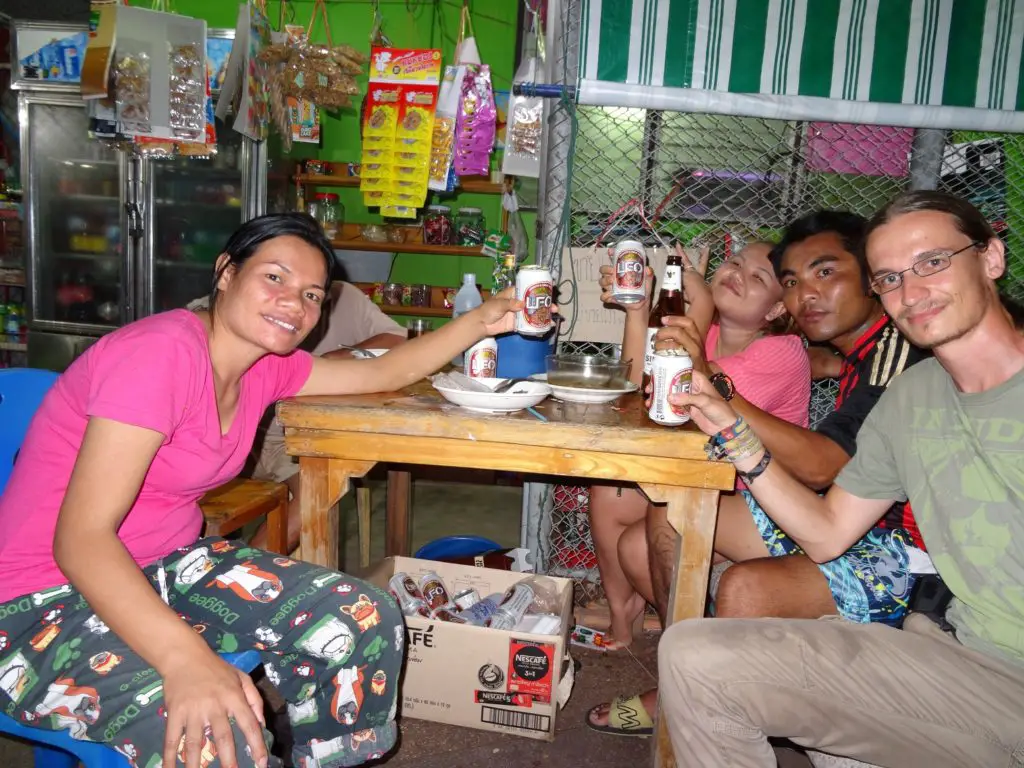
Where to go next
